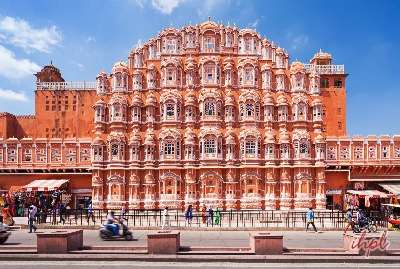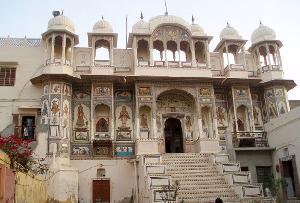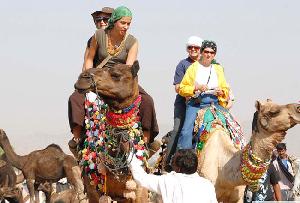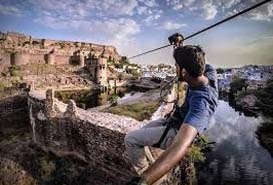The havelis in Shekhawati are repository of the fresco art, that so flourished in the Shekhawati region in Rajasthan following the Mughal’s encounter with the Rajputs. The miniature painting art got into the Rajput culture from the Mughals. The Mughals, who brought the miniature painting art from the Persian and Chinese tradition of miniature illustration, adorned their monuments and tombs with miniature floral motifs with tiles. The Shyonarayan Kyal Haveli Laxmangarh is one of the famous havelis in Shekhawati.
The town of Laxmangarh came into being in the year 1862. Earlier this place was known as Bergaon village which was capital of Meel Jats- a Rajput tribe. Rao Raja Laxman Singh of Sikar constructed fort of Laxmangarh at this place and the place has its name from him.
The town was planned by Rao Raja Laxman Singh of Sikar Thikana nearly 200 years ago when Laxmangarh was under Shekhawati region of erstwhile Rajputana. Shekhawati was then a thikana of the kingdom of Jaipur. The jagirdars of these thikanas were called Rao Rajas and Laxman Singh happened to be the Rao Raja of Sikar and founder of Laxmangarh. The havelis in Laxmangarh in Rajasthan are popular tourist attractions of the place.
The Shyonarayan Kyal Haveli Laxmangarh in India is one of the best preserved havelis in Laxmangarh. The haveli was built by Shyonarayan Kyal, a prominent businessman of Laxmangarh. The Haveli was built in the 19th century and served as the residence of the huge Kyal family. The Kyals were prominent businessmen of the area and were a very distinguished and revered family in the locality.
The traders in Rajasthan did quite well with the gain in power of the British colonialists. With the possibility of export and import increasing manifold and the betterment of transport and communication systems, business became easier if one agreed to the terms and conditions of the Brits. They did it seems, because the Rajasthani traders made quite a name and quite a bit of wealth for themselves. In fact a large number of successful industrialists in independent India hail from Rajasthan.
Behind the Rathi Family Haveli, a short distance to the east is the Shyonarayan Kyal Haveli, which dates from around 1900. Inside the Shyonarayan Kyal Haveli Laxmangarh in Rajasthan India under the eaves on the east wall, you can see a painting depicting a man and woman engaged in an intimate tryst while a maidservant stands by with a glass of wine at the ready. Other paintings at the Shyonarayan Kyal Haveli Laxmangarh include those of a woman admiring herself in a mirror and Europeans being drawn by horses with a tiny coachman at the reins.
The Shyonarayan Kyal Haveli Laxmangarh also reflects the characteristic grand architecture with grand carved wood door, courtyards and pillared hallways.












